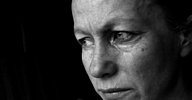What causes hairloss is an age old mystery that is gradually starting to be unraveled by hair research scientists. But really before we can drill down to what causes hairloss we must first gain a better understanding of the hair, and the delicate replacement cycle that goes unnoticed, until an interruption occurs.
What we refer to as hair is actually the hair shaft that originates just below the surface of the scalp, in the layer of skin known as the dermis. The all important follicle resides in the dermis with new hair being produced daily in the bulb, which is located at the base of the follicle. Living cells multiply in bulb, quickly dehydrate, die, and compact, forcing the newly formed shaft to continually push upward.
Every day about 100 hairs are lost through the natural evolution of hair only to be replaced by new growth. The average hair has a life expectancy of around 4 years. The hair replacement cycle is mediated by the androgen hormone dihydrotestosterone or DHT.
Generally (particularly in men) what causes hairloss is DHT gone wild. That’s right, an over production or over accumulation of DHT causes the all important hair follicle to shrink to a point where new growth is not longer possible. This condition is known as androgenetic alopecia (male or female pattern baldness) and is responsible for nine out of every ten cases of balding in men and one in four cases of hair thinning in women.
Androgenetic alopecia tends to follow a predictable pattern with hair loss in men forming the M shaped pattern defined by a receding hair hairline, moderate to severe balding on top, and hair loss in the area of the crown. Women on the other hand tend to experience a general thinning beginning on top but are spared from the receding hairline almost always seen in men. They do not generally see the M formation.
This condition is has a hereditary component, is progressive, and will not reverse itself without some type of treatment.
The most effective drug treatment is the twice a day topical solution minoxidil. Minoxidil works by enlarging shrunken follicles, extending a hairs life span, and stimulating dormant hairs to grow. Minoxidil is widely available, relatively affordable, and can be used safely by both men and women. On the downside once topical application is stopped all new growth will eventually wither and die.
What Next? There are currently a handful of hair re-growth products (specially formulated for both men and women) which have been proven effective both in blocking harmful hormones and bringing the all important dead hair follicles back to life. These specially formulated treatments can be used both as a preventative tool, starting before hair loss becomes severe, or after loss of hair has become noticeable. Whatever the level of balding or thinning you are experiencing these products could be just what is needed to overcome this latest life challenge.



